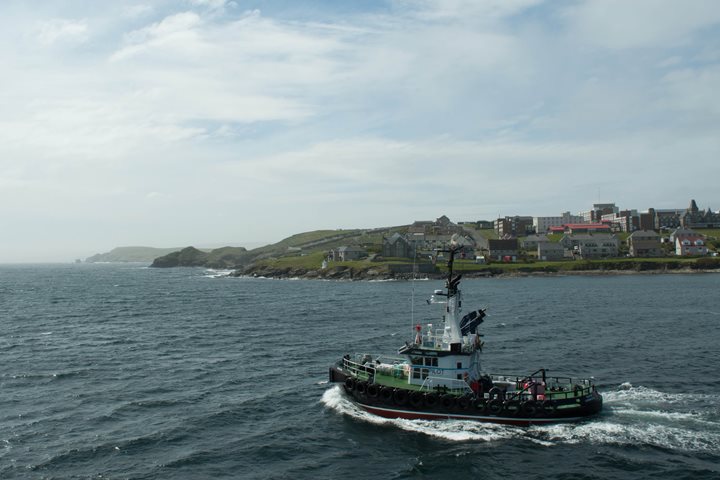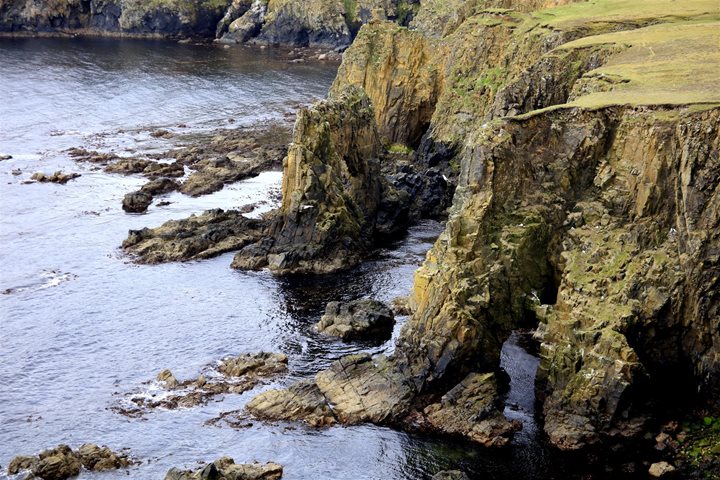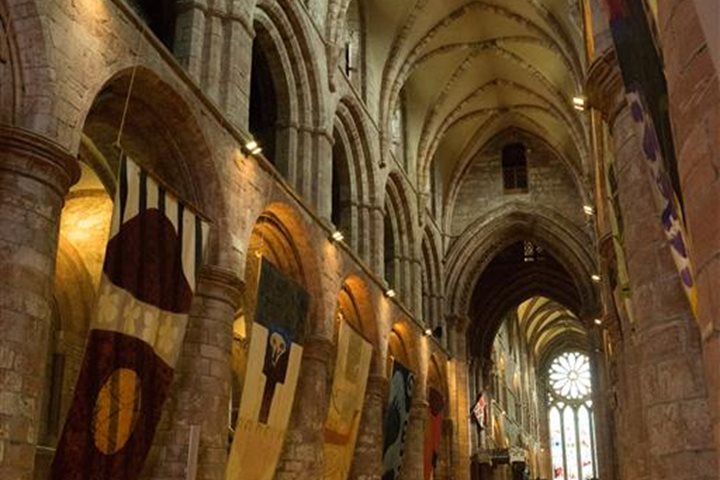Fair Isle is not preceded by the definite article; its name derives, like Faroe, from the Norse word for sheep. Still a place of pastoral agriculture, famed for its hand-knitted sweaters, we sailed close by this small island community of some seventy souls in the early morning but weather conditions conspired against the possibility of a landing by Zodiac. The decision was taken to press on to Lerwick where we would be alongside for the next two nights.
Our route in to the protected harbor of Lerwick took us past the smaller island of Moussa, no longer inhabited, but known to archaeologists throughout northern Europe for its fine example of a Pictish broch. These tall towers were built as well-protected homesteads, possibly with the additional function of looking out defensively to sea, for the overwhelming majority of brochs have coastal locations controlling seaway passages. The brochs are marvels of late iron-age engineering, with double walls and intramural staircases. Brochs would be home to extended family groups and were surrounded with field systems.
In Lerwick we secured a berth close to the excellent new Shetland and Museum Archives, opened in 2007 by the Queen of Norway, for Lerwick is closer to Norway than to England, not only in miles but in history. Shetland was ruled by Norway until 1469 when King Christian I of Norway mortgaged Shetland and Orkney to King James III of Scotland as part of his daughter’s dowry. Norne, a language closely related to Faroese, in turn a close ancestor of Old Norse, was spoken in Shetland well into the eighteenth century. The museum does a wonderful job of explaining and displaying its superlative collection for artifacts from the Stone Age to the present, with additional rooms devoted to traditional boat-making and to contemporary artwork.
Following dinner, at which haggis was served duly piped in by a highland piper in full ceremonial regalia, our music program continued with an on-board concert of traditional Shetland fiddle music from the talented local folk group, Haltadans. The name of the group means “halting” or lame dance and is also the name of a prominent Shetland megalithic circle around which a legend developed of a fiddler and his wife who danced through the night heedless of the passing of time until fatally the sun rose and petrified them.









